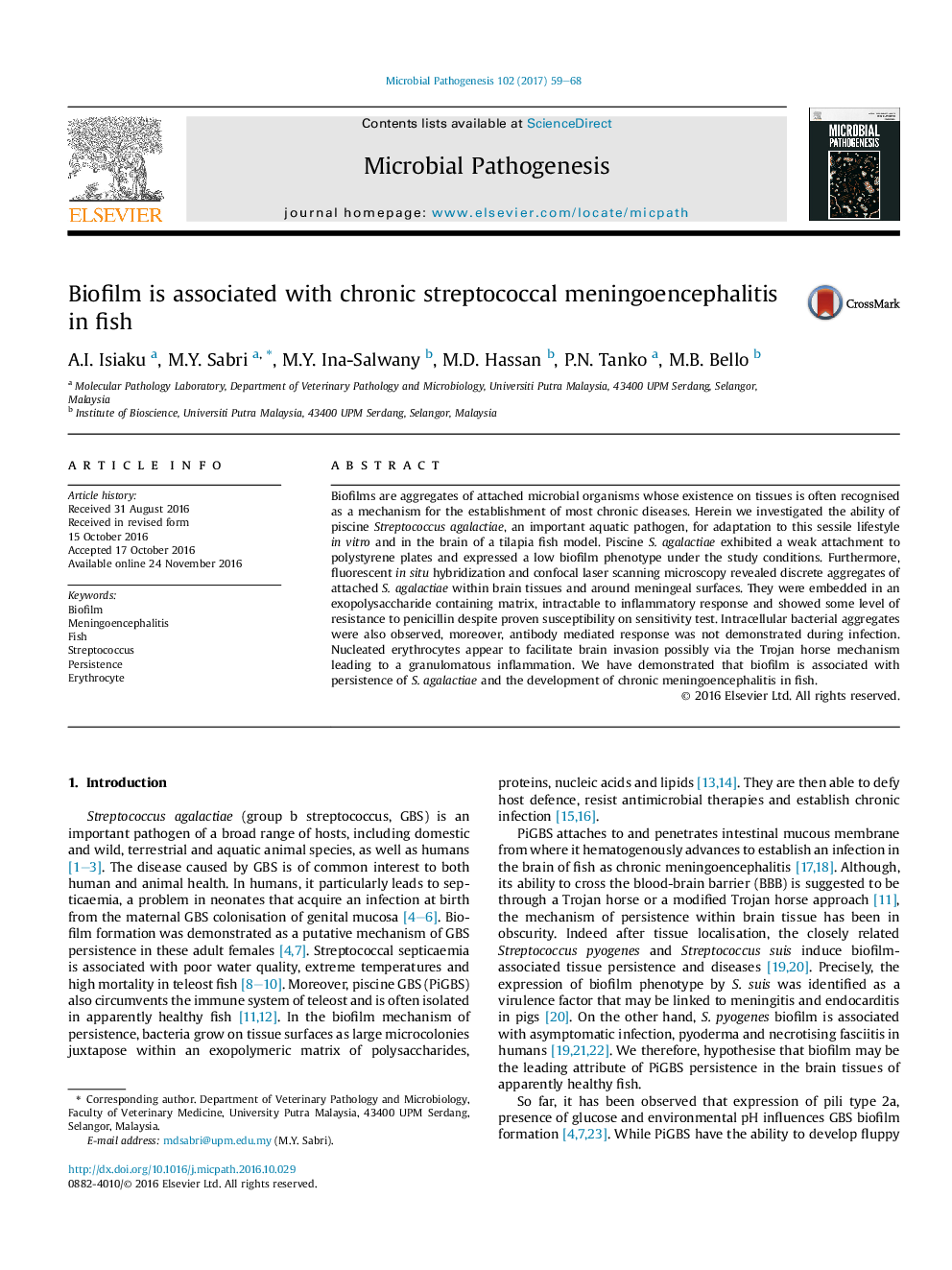| Article ID | Journal | Published Year | Pages | File Type |
|---|---|---|---|---|
| 5674040 | Microbial Pathogenesis | 2017 | 10 Pages |
â¢Piscine group b streptococcus (GBS) biofilm was demonstrated in vitro, and in an in vivo tilapia fish model.â¢Piscine GBS biofilm induced chronic granulomatous meningoencephalitis in the tilapia fish model.â¢Nucleated erythrocytes may have been used by piscine GBS to invade the brain of the tilapia fish model.
Biofilms are aggregates of attached microbial organisms whose existence on tissues is often recognised as a mechanism for the establishment of most chronic diseases. Herein we investigated the ability of piscine Streptococcus agalactiae, an important aquatic pathogen, for adaptation to this sessile lifestyle in vitro and in the brain of a tilapia fish model. Piscine S. agalactiae exhibited a weak attachment to polystyrene plates and expressed a low biofilm phenotype under the study conditions. Furthermore, fluorescent in situ hybridization and confocal laser scanning microscopy revealed discrete aggregates of attached S. agalactiae within brain tissues and around meningeal surfaces. They were embedded in an exopolysaccharide containing matrix, intractable to inflammatory response and showed some level of resistance to penicillin despite proven susceptibility on sensitivity test. Intracellular bacterial aggregates were also observed, moreover, antibody mediated response was not demonstrated during infection. Nucleated erythrocytes appear to facilitate brain invasion possibly via the Trojan horse mechanism leading to a granulomatous inflammation. We have demonstrated that biofilm is associated with persistence of S. agalactiae and the development of chronic meningoencephalitis in fish.
